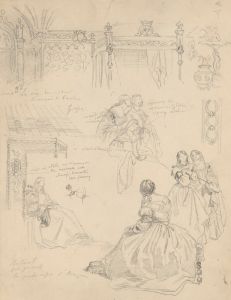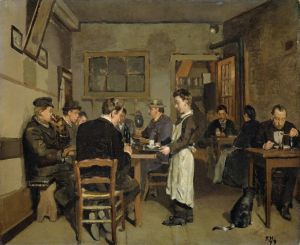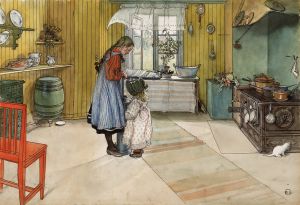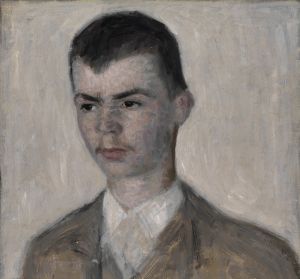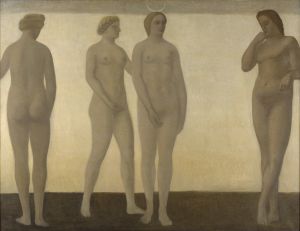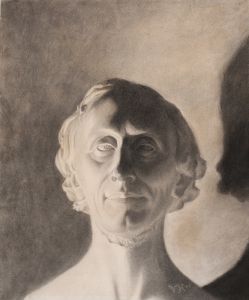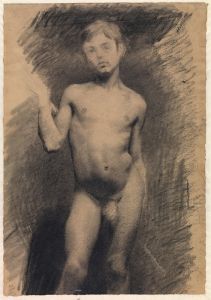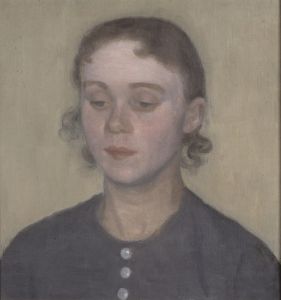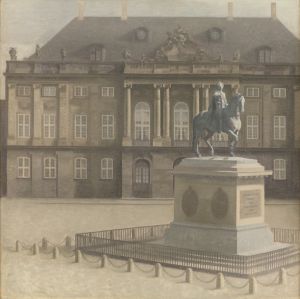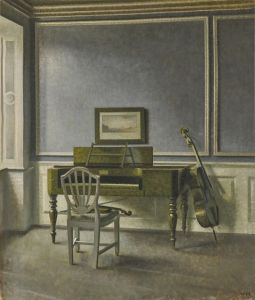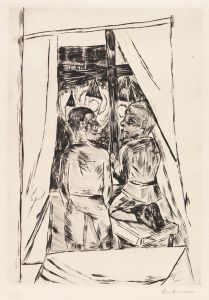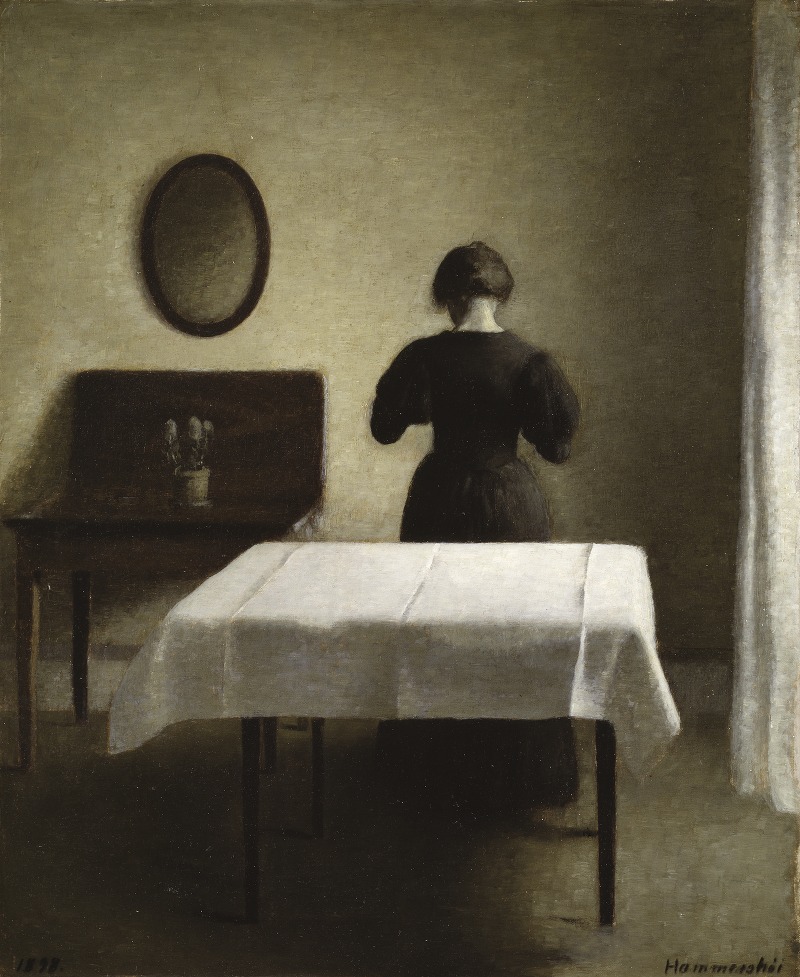
Interior
A hand-painted replica of Vilhelm Hammershøi’s masterpiece Interior, meticulously crafted by professional artists to capture the true essence of the original. Each piece is created with museum-quality canvas and rare mineral pigments, carefully painted by experienced artists with delicate brushstrokes and rich, layered colors to perfectly recreate the texture of the original artwork. Unlike machine-printed reproductions, this hand-painted version brings the painting to life, infused with the artist’s emotions and skill in every stroke. Whether for personal collection or home decoration, it instantly elevates the artistic atmosphere of any space.
Vilhelm Hammershøi's Interior is one of the many works by the Danish painter that exemplifies his distinctive style, characterized by subdued color palettes, minimalistic compositions, and an evocative sense of stillness. Painted in the late 19th or early 20th century, this artwork reflects Hammershøi's focus on quiet domestic interiors, often featuring sparsely furnished rooms with soft, diffused light. His works are celebrated for their introspective atmosphere and meticulous attention to detail.
Hammershøi frequently used his own home in Copenhagen as the setting for his interior scenes, and many of his paintings depict rooms from his apartment at Strandgade 30. These spaces are often rendered with muted tones of gray, white, and beige, creating a calm and contemplative mood. The artist's wife, Ida Hammershøi, often served as a model in his paintings, though she is typically portrayed in a passive or introspective pose, such as sitting or standing with her back to the viewer. In Interior, as in many of his works, the human figure—if present—blends harmoniously into the composition, emphasizing the relationship between the individual and their surroundings rather than focusing on personal identity or narrative.
Hammershøi's interiors are notable for their sparse decoration and the absence of overt storytelling. Instead, they invite viewers to engage with the subtle interplay of light, shadow, and texture. The artist's approach to composition often includes strong geometric elements, such as doors, windows, and furniture, which create a sense of order and structure within the scene. This restrained aesthetic aligns with the broader Symbolist movement of the time, which sought to evoke emotion and meaning through suggestion rather than explicit representation.
Vilhelm Hammershøi (1864–1916) was a prominent figure in Danish art and is often associated with the "Golden Age of Danish Painting." However, his work stands apart from many of his contemporaries due to its introspective and modern qualities. While his art was not widely recognized internationally during his lifetime, it has since gained significant acclaim, with exhibitions in major museums around the world.
Interior is a quintessential example of Hammershøi's ability to transform ordinary domestic spaces into meditative works of art. The painting reflects his mastery of light and composition, as well as his unique ability to capture the quiet beauty of everyday life. Today, Hammershøi's works, including Interior, are celebrated for their timeless quality and their ability to resonate with contemporary audiences.






